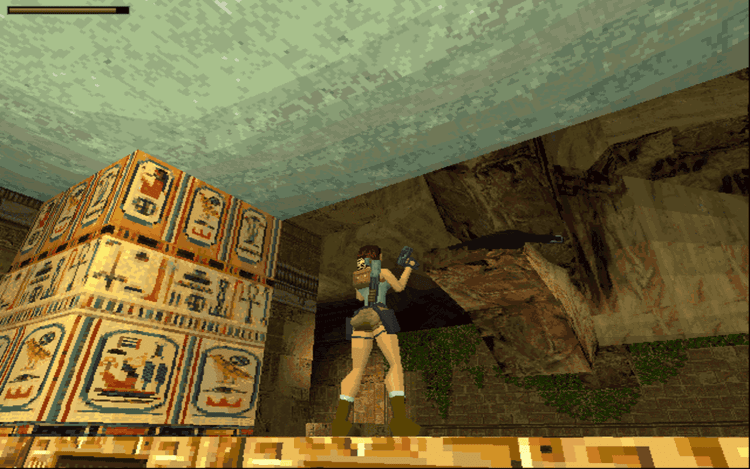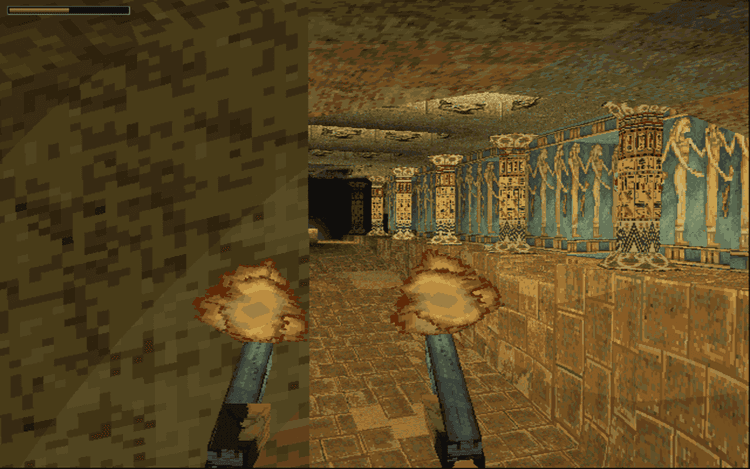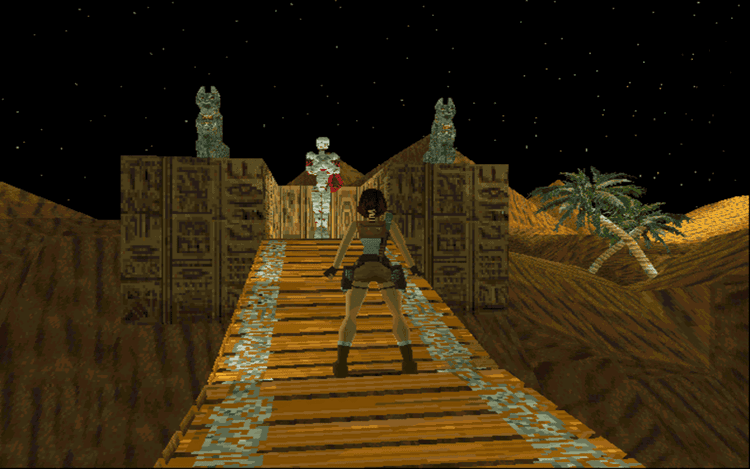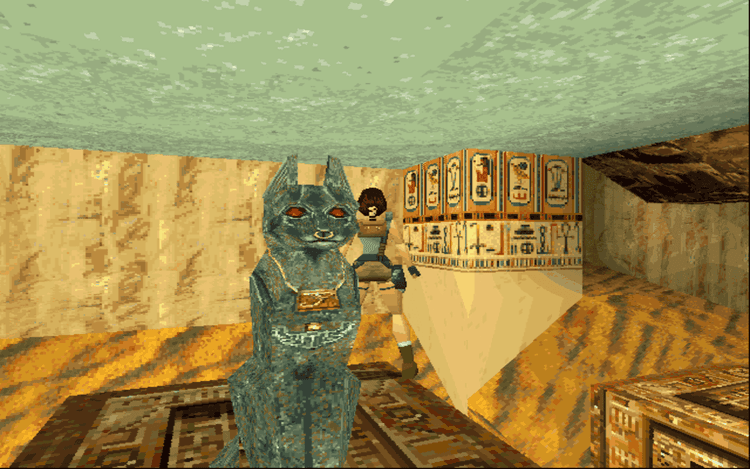
Tomb Raider: Gold unites the original Core Design adventure and its expansion in one refined classic. Published by Eidos Interactive, the game invites players to guide Lara Croft through vast Peruvian tombs, sun-bleached Greek ruins, and alien Atlantean chambers while uncovering relics shrouded in myth. The fluid mix of acrobatics, puzzles, and third-person gunplay set a standard later echoed by Prince of Persia and Indiana Jones and the Fate of Atlantis, yet Tomb Raider: Gold remains uniquely cinematic. Whether you choose to play the adventure online or offline, this timeless game rewards exploration, quick thinking, and bold leaps.
Tomb Raider: Gold stands as the definitive edition of the landmark adventure that introduced the world to Lara Croft. Developed by Core Design and published by Eidos Interactive, the game arrived during the formative years of 3D graphics and pushed the medium forward with fluid character animation, texture-mapped environments, and a cinematic camera that framed every daring leap. Gold combines the original 1996 quest with four extra levels that expand the storyline, letting players delve deeper into Egypt’s Temple of the Cat and the strange organic corridors of Atlantis. Even decades later, the interplay of precise platforming, environmental storytelling, and light combat feels fresh because its design balances challenge and clarity. The narrative—clashing with power-hungry corporate mogul Jacqueline Natla while piecing together an ancient artifact—echoes timeless pulp adventures, yet Lara’s cool resolve sets her apart as a fully realized protagonist whose presence reshaped how action games portrayed heroes.
Each level in Tomb Raider: Gold is crafted like a sprawling three-dimensional clockwork. Switches tucked behind waterfalls open stone gates far above, secret rooms reward players who dare to peer over seemingly bottomless pits, and the occasional ferocious creature stalks the corridors to add urgency. Rather than relying on random key hunts, the game layers environmental clues: a pattern of footprints in the dust hints at a breakable floor, while a half-submerged pillar marks the safe path across a trap-ridden pool. The deliberate pacing gives newcomers time to study each puzzle and rewards veterans who notice subtle musical cues or shifts in lighting. Because Lara’s moveset is built on a grid-based system of steps, jumps, and grabs, mastering traversal feels almost rhythmic; soon you begin counting blocks in your head, lining up perfect swan dives, and chaining vaults like a choreographed dance. This mechanical clarity, paired with non-linear routing, inspired countless later series—from Silent Hill’s labyrinthine hospitals to the sprawling dungeons of The Legend of Zelda: Ocarina of Time—proving that Tomb Raider’s design philosophy remains influential long after polygon counts have skyrocketed.
Tomb Raider: Gold demonstrates how a restrained score can heighten immersion. Most of the adventure plays out in near silence, broken by Lara’s footsteps echoing across marble, the drip of subterranean water, or the sudden roar of an awakened guardian. When composer Nathan McCree’s orchestral stingers do appear, they mark revelation: the camera sweeps across a vast coliseum, a stone sphinx looms out of darkness, or an Atlantean queen erupts from a fleshy cocoon. Coupled with softly flickering torches and dynamic draw distances that reveal vistas in stages, these auditory touches make every chamber feel ancient and alive. Texture work, though limited by the era’s memory constraints, uses earthy palettes and hieroglyphic borders to suggest histories written long before Lara’s arrival. By avoiding dated pop-culture references, the art direction grounds the experience in mythic timelessness, ensuring new generations can dive in without feeling out of sync with last decade’s trends. Exploration becomes its own reward; finding a hidden med-pack behind a crumbling wall or uncovering the shortcut that loops back to a central hub creates a subtle but lasting sense of mastery.
Thanks to modern emulation, it is possible to play Tomb Raider: Gold online completely free, directly in a browser, and even on most mobile devices without restrictions. The DOS original loads swiftly, detects keyboard or touchscreen inputs automatically, and retains every nuance of Core Design’s physics. Online play preserves the game’s deliberate pacing: there is no need for lightning-fast reflexes, so touch controls map neatly to Lara’s grid-based jumps and sidesteps. Because the experience streams assets in small bursts, lengthy downloads are unnecessary; within moments you are scaling the Obelisk of Khamoon or sprinting through Atlantis’s pulsing corridors. Crucially, the online format respects the original artistic vision: full-resolution textures, authentic MIDI sound, and the same puzzle logic remain intact, allowing newcomers to appreciate why critics once declared Lara Croft “the Indiana Jones of interactive media.” Whether on a desktop screen or a phone held sideways in a café, the adventure’s scope feels boundless, proof that great design transcends hardware generations.
After guiding Lara through four continents, defeating a rage-filled Atlantean queen, and collecting every hidden treasure, players often reflect on how the game keeps tension high without sacrificing elegance. Tomb Raider: Gold’s clean HUD displays only health and ammo, leaving the architecture to dominate the frame. Weapons scale sensibly—from dual pistols with infinite rounds to explosive dual Uzis that chew through scarce clips—so combat never overshadows exploration. Finishing those extra Gold levels feels like stepping behind the curtain of the original production: rooms are larger, enemy placements bolder, puzzles more confident, making the expansion a victory lap for both the developers and the player.
Tomb Raider: Gold endures because it trusts audiences to think, scan their surroundings, and relish incremental discovery. Basic controls involve the arrow keys (or directional touch swipes) for movement, Alt to jump, Ctrl to interact and shoot, and Shift to walk with precision—simple yet deep enough to support breathtaking acrobatics. Lara Croft’s inaugural journey remains an essential chapter in gaming history, proving that atmosphere, ingenuity, and a fearless heroine never go out of style.
All used codes are publicly available, and the game belongs to its original authors.
Share game
Share game








Share game